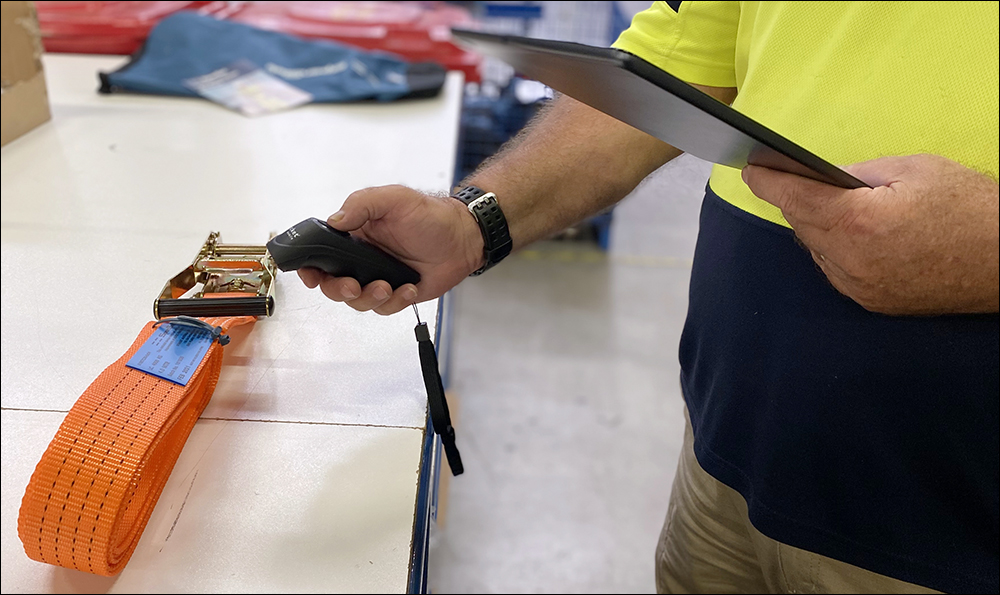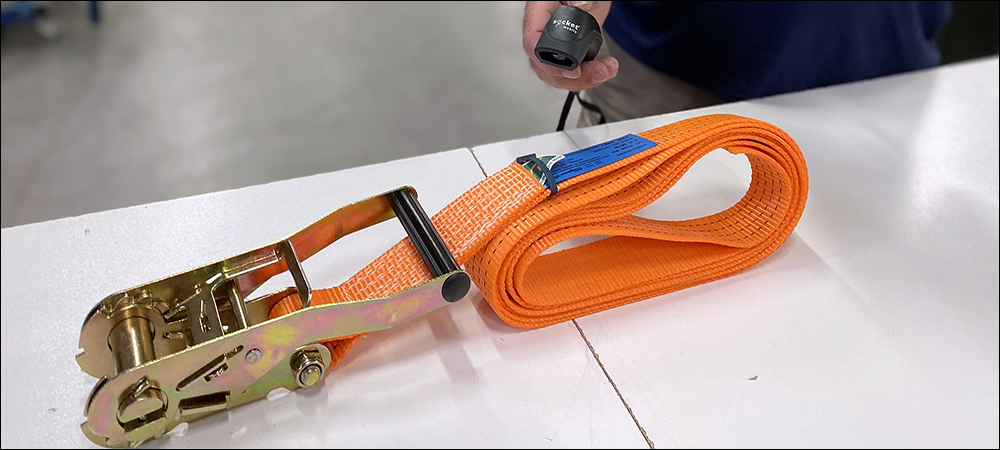Companies that buy safety equipment from SpanSet Australia can now acquire an automated solution for equipment inspection onsite, leveraging HF RFID technology. The system is intended to automate the documentation process so inspectors can focus on their work rather than on filling out paperwork, access digital data regarding a given piece of equipment, and record what they do and create certifications, all using a tablet in the field. SpanSet Australia has been in operation for 25 years and is a division of SpanSet Group, which is licensed to market the products of CoreRFID, the U.K. firm that provides the system’s RFID tags, readers and CheckedOK cloud-based software.
SpanSet Australia provides customers with webbing-based height-safety equipment, such as lifting slings and hoists. Those customers include the Australian Defence Department, and SpanSet provides maintenance and inspection services to some users, including to five Defence Department bases. This year, the company has branded a new solution known as IDXpert Net, which provides both asset management and tracking for customers that have purchased SpanSet’s products. The CheckedOK technology behind the system ensures that SpanSet Australia’s own inspectors can capture and update data automatically regarding equipment inspections in the field, the company reports.

The solution is intended to identify a piece of equipment, automate routine inspection processes, allow online access to certificates and inspection records, and enable the sharing of data with auditing parties. The technology can be used with SpanSet’s equipment, or as a retrofit solution by adding RFID labels to other equipment employed on a worksite, such as cranes, hoists or forklifts. In recent months, SpanSet Australia has begun building the HF RFID tags into the products it supplies to customers using the IDXpert Net solution. In the future, however, the firm intends to build the RFID technology into all of its products.
Equipment inspection has traditionally been labor-intensive, SpanSet explains, and filling out forms and inputting data into a digital format can be time-consuming. In the field, goods are inspected, the results are recorded manually and a report is sent to the management office of the company that owns the equipment. Database inputting has generally been the responsibility of office personnel for the equipment owner, according to Kristian Pritchett, SpanSet Australia’s managing director.

Kristian Pritchett
Most inspections require six to eight hours onsite, Pritchett says, with an additional four hours dedicated to recoding and inputting the paperwork. However, he adds, “The system needs to come into the modern era.” To make the solution automatic, SpanSet began working with CoreRFID, which also provided its technology to SpanSet Europe. With the automated system, he explains, “We hope to get a product that will enhance our inspection capabilities and be of value to our customers.”
The initial discussions began in early 2019 and the system was taken live at the end of last year, according to Munzi Ali, CoreRFID’s technical director. The solution consists of CoreRFID’s 13.56 MHz I-Code tags, which comply with the ISO 15693 standard. SpanSet provides its customers or its own inspectors with CoreRFID HF RFID readers that are paired with tablets via Bluetooth. The system can employ HF RFID desktop readers with a USB connection in offices or storage locations.
The CheckedOK software manages the collected data for the IDXpert NET service. Users first purchase equipment from SpanSet that comes with built-in RFID tags, and they can retrofit existing equipment by adding RFID labels to those assets. The unique ID number encoded on each tag is read via a handheld or desktop reader, and the information is captured and stored in the cloud-based software, along with details regarding the tagged products.
An inspector visits a remote site equipped with an HF RFID wand reader with a Bluetooth connection to his or her Android-based tablet, then reads the tag ID of every item being inspected. The IDs are captured and forwarded to the tablet, which accesses data in the cloud-based software. The inspector then views identifying information about each item, along with its history and certificates. If he or she conducts an inspection or provides maintenance, those details can be updated in the system as well, and they can attach pictures and create instructions or data sheets about the equipment.
If the equipment passes inspection, an automatic certificate can be generated, which the customer (a construction company manager, for instance) can access and store, or print for the company’s records. In the event that government inspectors require certificates, they can be easily accessed for each item. That information can be shared with auditors, management or other parties. The technology can also be used for asset management, by enabling operators to scan the tags of multiple goods stored at a worksite and thereby capture an inventory count in considerably less time than would be required for manual counting.
For retrofits, the company sells tags to its customers that are intended for a variety of form-factor devices, including for metal and non-metal items. Most tags are self-adhesive and are intended to sustain an outdoor environment, including those containing temperatures ranging from -25 to +85 degrees Celsius (-13 to +185 degrees Fahrenheit).
The technology can be used not only for inspections, the company reports, but also for hazardous materials management, general inventory tracking or controlling accident hazards. At SpanSet Australia, Pritchett says, the RFID system will initially be used solely for inspections, though other uses cases will be added over time. “We want to take the software as far as possible to enhance our business,” he states.


